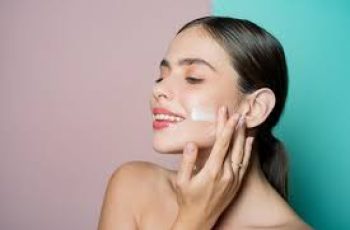
Glitter is a must-have to glam up your makeup and look truly dazzling; used for glowing highlights, shiny lips, and glittery eyes, glitter is the instant cheap & chic touch for that gorgeous glow.
Since the 80s, glitter and shimmer have officially taken the skincare world by storm, migrating from makeup. But is glitter good for your skin and the environment?
In this article, we will be discussing:
- what is glitter?
- why is plastic glitter bad for the environment?
- biodegradable eco glitter – is it truly a good alternative?
- is glitter good for your skin?
1| 4 how glitter is made
Glitter is made from:
PET or PVC plastic coated with aluminium and then a plastic film
Mineral mica
Synthetic mica
biodegradable cellulose coated with aluminium and then plastic film
biodegradable cellulose coated with a plant-based film
biodegradable cellulose coated with synthetic mica
Traditional glitter is made by copolymer sheets combined with a layer of reflective material, such as aluminium foil, and then covered with another thin plastic layer. In other words, microplastic made of a plastic core coated with aluminium and a polyester PET film. Very cost-effective, very versatile, and bad for the environment.
This type of glitter is listed on your cosmetic label as (for example) 5 CI19140 Yellow Lake …
The mineral glitter option is made with crushed mica; however, this cosmetic ingredient has major ethical issues, from child labor to human rights abuses.
This type of glitter is listed on your cosmetic label as mica, iron oxide…
There is a synthetic option for mica called fluorphlogopite, composed of magnesium aluminum silicate sheets, weakly bound together by potassium. It is synthetic but ethical.
This type of glitter is listed on your cosmetic label as Fluorphlogopite, Methicone.
Many biodegradable glitters under patent are now available on the market, some 100% biodegradable in fresh water and some others not 100%.
These types of glitter is listed on your cosmetic label as (for example):
92% biodegradable option – not plastic free: Rayon (And) Glycerin (Plant Derived) (And) Aqua (And) Urea (And) Styrene/Acrylates Copolymer (And) CI 77000
100% biodegradable option with mineral mica – plastic free: Rayon (and) Glycerin (and) Aqua (and) Urea (and) Shellac (and) Mica (and) CI 77489
100% biodegradable option with synthetic mica – plastic free: Rayon (And) Glycerin (Plant Derived) (And) Aqua (And) Urea (And) Shellac (And) Synthetic Fluorphlogopite (And) Titanium Dioxide (And) CI 77491 (And) Tin Oxide (And) Silica
More on bio glitters below.
2| 4 why is plastic glitter bad for the environment?
Plastic glitter, no matter the material and the size, does not biodegrade in the natural environment and ends up in our oceans.
Think of glitter as the cousin of microbeads; made of similar materials and size, and it is as dangerous for animals as microbeads, + it pollutes even more.
Glitter finds its way to our oceans quite quickly. Water filtration systems cannot trap tiny particles of glitter washed off from our makeup (the same way they cannot trap microbeads), so glitter ends up being ingested by fishes, infiltrating the food chain. A recent study has shown that glitter is also one of the causes of the dramatic lowering of chlorophyll produced in water, indicating reduced levels of phytoplankton, or microalgae.
Conventional glitter is as bad as microbeads. Glitter is a microplastic.
3| 4 the non-plastic alternatives: mica and biodegradable eco glitter. Are they eco-friendly?
Good news – there are good biodegradable glitters available.
Not so good news – not all biodegradable glitters are genuinely eco-friendly.
- 92% biodegradable glitter with aluminium and plastic coating
One type of biodegradable glitter comprises a core of plant-derived cellulose from the Eucalyptus tree (MRC = modified regenerated cellulose), then coated with aluminium for reflectivity and then bonded with a thin plastic layer for added colour. This type of glitter is not 100% biodegradable because its plastic content is 8%.
When this type of bio glitter reaches the ocean, like plastic glitter, it does not dissolve in water but under specific environmental conditions is degraded and turned into carbon dioxide, water and biomass by bacteria and other environmental microorganisms. No bacteria = no biodegradation
- 100% biodegradable plant-based glitter (no aluminium and no plastic coating)
A very similar 100% biodegradable glitter but way less sparkly does not have aluminium and plastic coating but plant-based alternatives. This option is inspiring because it is truly biodegradable in freshwater. This glitter is softer on the skin than polyester glitter but has a very mild iridescent effect. - 100% biodegradable glitter made with synthetic mica
Another non-PET glitter alternative is mica, which is increasingly used in cosmetics. This type of Bio glitter offers a truly aluminium and plastic-free glitter option using cellulose and mica instead.
But there is a catch. A study conducted by Danielle Green, PhD, of ARU, found that the effects of biodegradable glitter (made with aluminium and plastic coating) and mica glitter on chlorophyll levels were almost identical. Chlorophyll production shrinks by two thirds.
When comparing plastic and bio glitter made with aluminium, Green added: “Our study is the first to look at the effects of glitter in a freshwater environment, and we found that both conventional [PET/PVC] and alternative [BIO] glitters can have a serious ecological impact on aquatic ecosystems within a short period … [specifically] a negative effect on important primary producers, which are the base of the food web; while glitter with a biodegradable cellulose core has an additional impact of encouraging the growth of invasive species.”
100% biodegradable glitter (plant-based, no aluminium and PVC/PET) may not be 100% eco-friendly.
4| 4 is glitter good for your skin?
Generally speaking, cosmetic glitters are made with tested ingredients that are non-toxic and overall safe to use on healthy skin occasionally; however, Glitter applied to delicate areas such as eyes or lips may cause mild irritation and enter our bloodstream via the eyes nose and mouth.
So How Can I Wear Glitter Safely?
Tip 1 – Use only cosmetic grade glitter; never Craft Glitter. Non-cosmetic grade Glitter can seriously scratch up your corneas if not removed correctly. However, by using cosmetic grade glitter, you significantly reduce this risk, but you can’t eliminate it.
Tip 2 – Glitter should permanently be suspended in something – in a gel, oil, cream, gloss… A good cosmetic should be able to hold in place the Glitter and avoid running the risk of inhaling it or transferring it to your eyes.
Tip 3 – When removing your Glitter makeup, please make sure to avoid touching your eyes. Remove Glitter with an oil-based or liquid eye makeup remover on a cotton pad and wipe away from your eyes. If Glitter gets stuck between the lashes, use a cotton swab dipped in remover to get rid of it.
Tip 4 – Rinsing your face in the shower isn’t good enough to remove Glitter, especially if you use shimmering creamy highlighters.
Tip 5 – Buy good Lipstick and Lip-gloss with lip-safe micas or cosmetic grade glitter because it can still be absorbed and ingested (don’t forget that the skin on the lips is much thinner and more sensitive than the skin on the arms and legs so mica and Glitter can be absorbed).
Is glitter good for your skin? Because glitter has not known benefits, the answer is no. But good glitter is not bad either. And it’s fun!
At Native Essentials we do not formulate our products with any form of glitter or mica.


